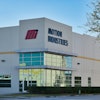Maintaining a safe working environment in your warehouse is just as important as your productivity. Productivity declines when accidents disable skilled employees or damage equipment and materials. Safety as a result must be taken seriously. Here are six ways to encourage your crew to work safely.
1. Show and Tell
Constantly reminding employees to practice safe behavior is important, but you must do more than talk. You need to show your employees how to work safely. When supervisors are observed taking shortcuts, workers think it is OK or that safety does not matter. Supervisors should never put production goals ahead of safety. A short-term focus will always lose in the long run. Always lead by example.
2. Place the Right Emphasis
Make safety a core value, not just the feature of the day. When you state that something is a priority, many employees may feel that if they wait long enough, the priority will change. You need to establish safety as a value objective; a permanent part of your company’s identity. Michael S. Deak of E.I. DuPont De Nemours & Co. says that business priorities do change. By making safety a part of your business, it will always be there.
3. Supply the Right Equipment
Your employees need to have access to the right personal protective equipment (PPE). In most warehouse environments, this consists of sturdy gloves, eye protection and footwear. While supplying the right boots is often not an option, you should provide hand and eye protection. Make sure that PPE is readily available and comfortable for your workers. Take the time to get input from your staff on how well their PPE fits and works.
Make use of any technology improvements that are available. In addition to PPE, there are equipment options that can reduce the strain placed on employees. Consider items like pallet inverters, load transfer systems and lifts to make moving and transferring materials in your warehouse easier.
4. Provide the Training
Your workers cannot work safely without safety training. Provide the training and hold regular meetings and refresher classes. This puts safety in the forefront. When it comes to equipment operation, your forklift operators should be certified. You need to let employees know that safety is required and expected. They need to understand the dangers that surround them. What may seem obvious to you may not be obvious to your staff.
5. Establish Accountability
Once your staff has been trained and provided the right equipment, they need to be held accountable for working safely. This must apply to everyone in your warehouse. You cannot overlook bad habits of supervisors while reprimanding a dockworker. How you handle safety infractions is up to you, but your employees must own their actions. You will see better results if you offer suggestions for safer operation at the same time you express criticism.
You do need to document lapses in safety. Without proper records, you may not have the backup you need to take action against an employee that continues to ignore your requirements. Documentation will also help protect you if an employee is injured performing an action after they have been instructed otherwise.
6. Rewards
You have many choices in rewarding employees for safety. You can offer some paid time off, a paid luncheon or outing, or offer gift cards for exemplary behavior. The best results will come from asking workers what type of benefit would motivate them. However, there are some things that you should avoid.
Simply providing a reward for a set number of days without an incident could cause personnel to avoid bringing problems to your attention. You must make your safety program rewards-based and not punishment-based — this is what provides encouragement. Do not withhold rewards for safe workers because of the bad habits of one or two individuals. Hold contests for safety ideas. The prizes or rewards do not have to be huge, but they should encourage participation. The important part is to acknowledge the efforts your workers are making and find ways to make the safety program positive and fun.























